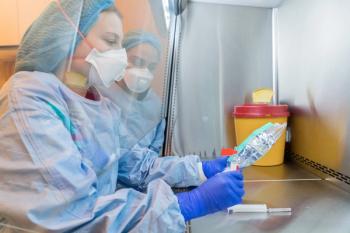
Study: 2 Mtb Proteins May Be Used to Detect Tuberculosis Infection in Elephants, Humans
Investigators suggested a new test method for the infection with ESAT6/CFP10 and to monitor the disease development and treatment with Ag85B.
Tuberculosis (TB) is the leading cause of death from a single pathogen in humans before the emergence of SARS-CoV-2, but there have been reports of infections and deaths in elephants worldwide.
Additionally, elephant-to-human transmission has also been reported. Most human cases of TB develop from long-term asymptomatic infection, known as latent TB, making methods for early detection necessary to help control the infectious disease spread.
However, it is difficult to apply the tests physicians use in humans, such as chest X-rays or sputum collection to elephants. Antibody tests use serum, which is easy to collect, but only a few types of antigens have been investigated so far.
At the Fukuyama Zoo in Hiroshima, Japan, an Asian elephant, named Fuku, developed TB in 2015 and was treated for 3 years, ending in 2018. This is the first TB treatment for elephants in Japan, and for this case, sera from 12 years prior to the development of the disease to 1 year after completion of treatment had been cryopreserved.
A team of investigators from Niigata University, the University of Miyazaki, and others, investigated IgG antibodies against Mtb proteins in Fuku’s serum using Enzyme-Linked Immuno Sorbent Assay (ELISA).
The presence of antibodies against 2 Mtb proteins, ESAT6/CFP10 and MPB83, was tested by DPP, a rapid TB test kit for elephants that is already used worldwide.
As a result, antibodies again ESAT6/CFP10 were detected in all sera tested. This could suggest that the elephant had been infected with Mtb 12 years prior to the development of disease and developed the disease after a prolonged asymptomatic infection, which is latent TB in humans.
The investigators tested for the presence of IgG antibodies to 11 Mtb proteins, including ESAT6/CFP10 and MPB83, by ELISA. In addition to ESAT6/CFP10 and MPB83, IgG antibodies to the protein Antigen 85B (Ag85B) were detected. By contrast, IgG antibodies against Ag85B and ESAT6/CFP10 were not detected in sera of 7 healthy elephants, which suggested that they are specifically evident in elephants with TB.
The monitoring of IgG levels against these proteins showed that IgG against ESAT6/CFP10 remained at high levels consistently, without effects by the development of TB or treatment.
However, IgG against Ag85B were not found 12 years prior to onset but increased 2 years prior to disease development and declined with treatment.
There is no sustainable tool to predict TB development form latency before disease development, according to investigators.
The study results imply that Ag85B IgG could be useful in the detection of TB progression from latent TB.
Based on these results, investigators suggested a new test method to detect Mtb infection with ESAT6/CFP10 and to monitor the disease development and treatment with Ag85B.
However, investigators noted that these findings were based on just 1 case.
“We would like to conduct joint research with universities in Southeast Asia and verify the present results with many elephant-TB cases in the future. And more, TB is difficult to diagnose in asymptomatic infection also in humans,” investigators said.
“We would like to examine patient sera to see if the antibodies found in this study can be detected in humans,” they said.
Reference
Usefulness of monitoring IgG against Antigen-85b for prediction of tuberculosis development from latency: From an elephant tuberculosis analysis. EurekAlert. News release. May 8, 2022. Accessed May 9, 2022. https://www.eurekalert.org/news-releases/951919
Newsletter
Stay informed on drug updates, treatment guidelines, and pharmacy practice trends—subscribe to Pharmacy Times for weekly clinical insights.


















































































































































































































